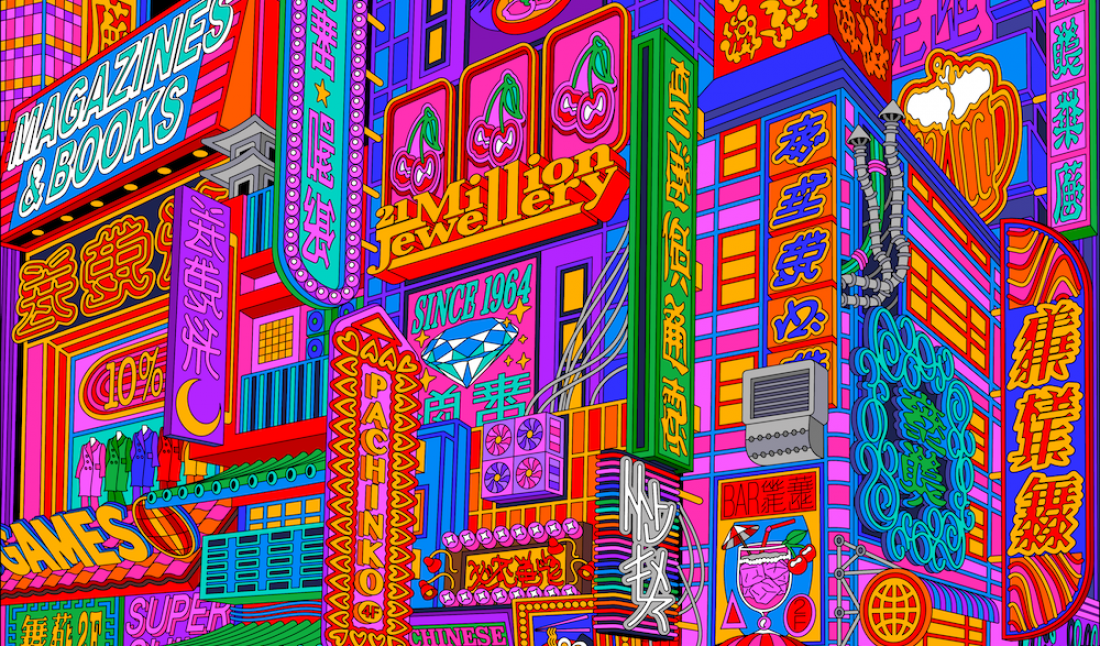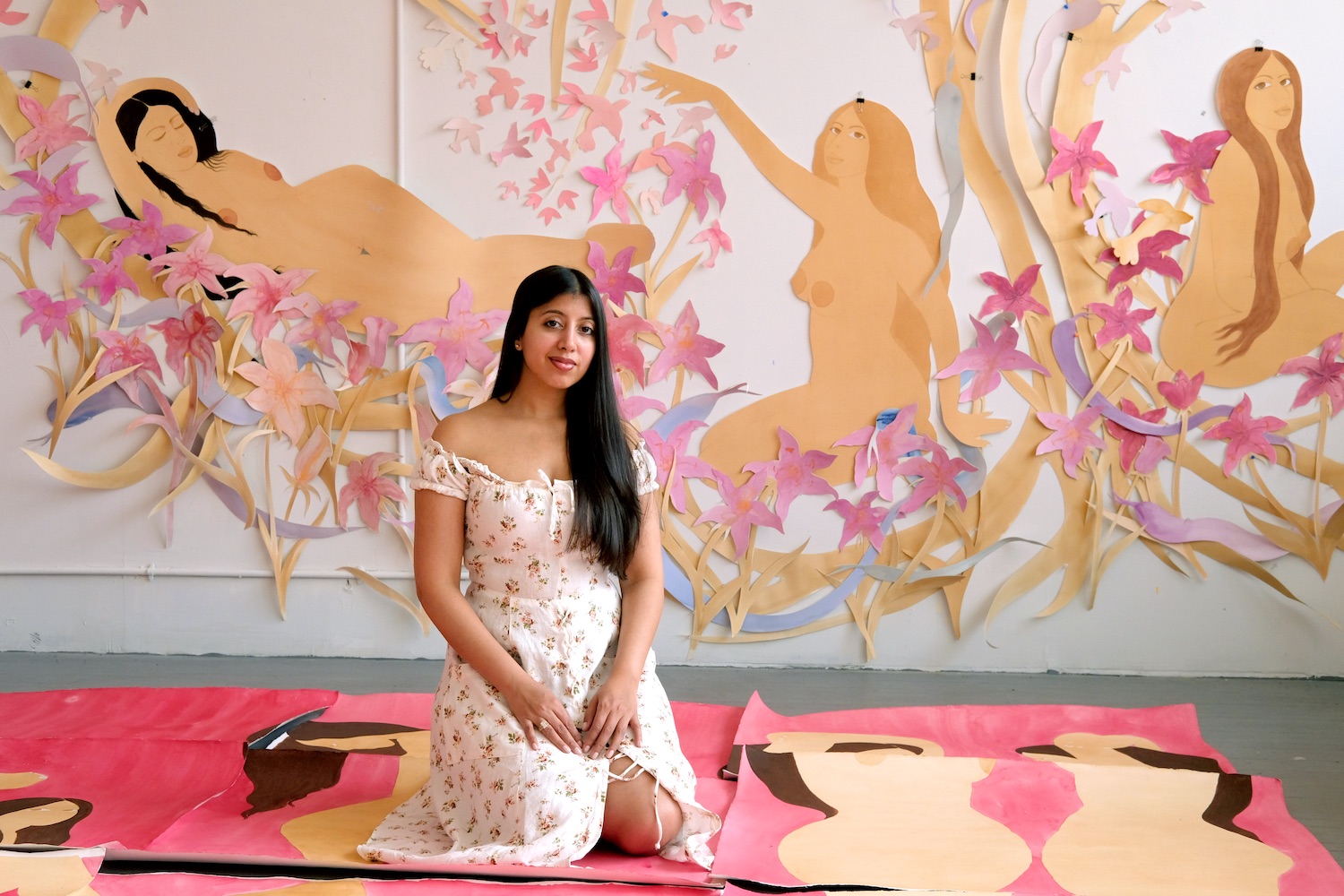As director of art and cultural programs at SuperRare, An Rong engages with artists in the crypto and digital art world through organizing shows online and in the metaverse, finding new ways of storytelling, and ultimately building community.
Rong recognized early on the potential for the digital art world to change the fine art market. Native digital art is connecting with people because it meets us where we’re at—online more than ever before. As she points out, how many young people have been to a physical art gallery, versus how many have liked an image of an artwork on Instagram?
Curating exhibitions such as “Invisible Cities” last spring with Elisabeth Johs and “Un-realism” this June, Rong is provided context for the work of crypto artists at SuperRare. She spoke with Whitewall about why she hopes the future of the digital art world will be much different than the traditional art world.
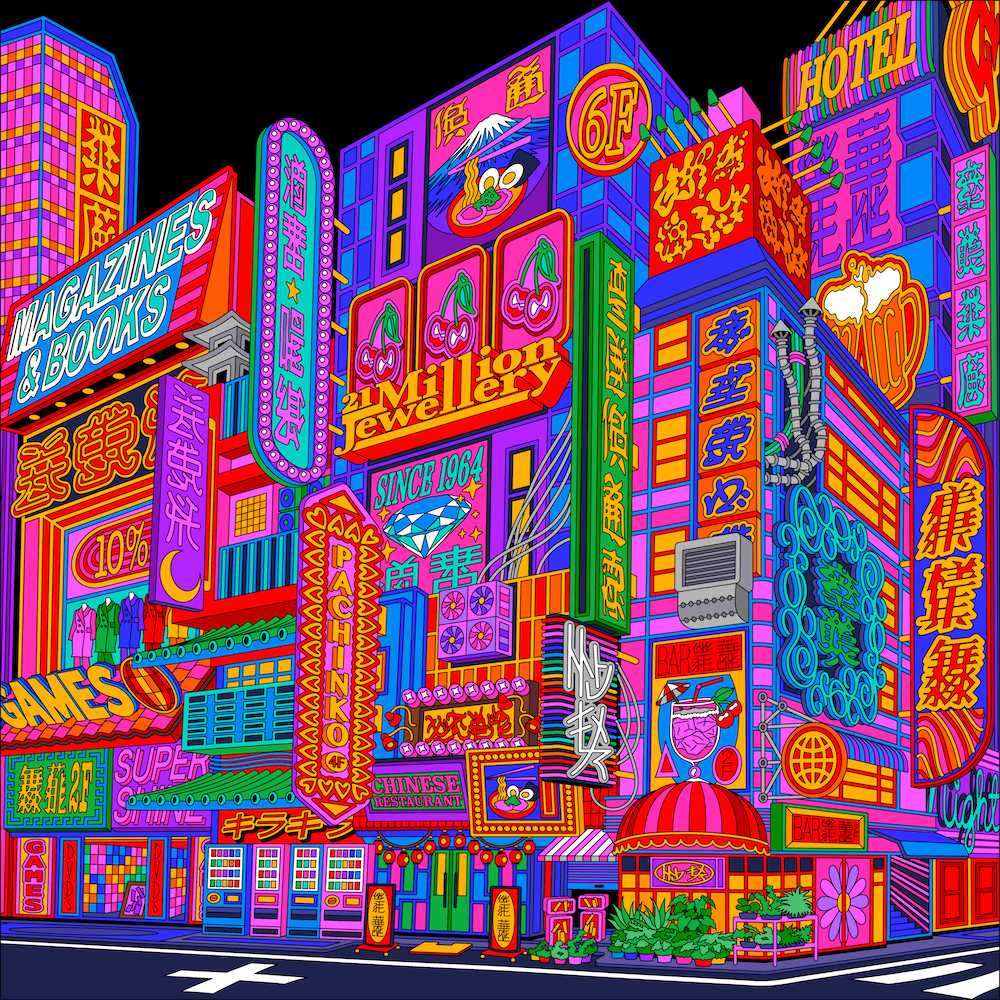 JENISU, City Scape, 2021, Unique Non-Fungible Token, courtesy of SuperRare.
JENISU, City Scape, 2021, Unique Non-Fungible Token, courtesy of SuperRare.
WHITEWALL: How would you describe your role at SuperRare?
AN RONG: I’m leading our art and cultural programs, which include exhibitions, art events, auctions, artist projects, special releases, and partnerships with art institutions around the world.
WW: Your master’s thesis, written in 2019, focused on blockchain and art. You said that you saw then that digital art would revolutionize the art world. What potential did you see then? And what has that expanded to now?
AR: Before blockchain, digital art was very hard to be accepted into the mainstream fine art world. First of all, it’s the art market. It was difficult to collect digital art. The file can be infinitely reproduced; the equipment that usually goes with the digital art can deteriorate; the software can become invalid, as everything is happening fast and constantly upgraded in the digital world. There are so many risks and uncertainties in collecting digital artworks. Then in the museums, the preservation and exhibition of digital artworks are not easy either.
Digital art is often tied to something physical, because people are uneasy about the idea of a purely digital world. But crypto art really changes this. Crypto art allows digital art to have a huge market. And then, given how intertwined the art market and the fine art world are (unfortunately), digital art can enter the mainstream fine art world much more easily, without being tied to anything physical. We and art can happily live in the metaverse.
The idea really excited me back then because digital art is already everywhere. But the fine art world is turning its back to it. How many millennials have visited an art gallery? And how many millennials have liked an Instagram Artsy post? Blockchain seems long overdue for digital art and artists. That’s why I think the potential is huge.
WW: You’ve said that you see the future of the digital art world as something being rebuilt from scratch. What could that look like?
AR: What I meant was when a disruptive thing happens, by definition it’s something completely new. You can’t expect Louvre to be as influential as MoMA on the modern art era. So it’s the same with crypto art. We have “art institutions” like the Museum of Crypto Art, which literally started from scratch in the metaverse. It’s possible to become one of the most important museums for digital art in the future. Or auction houses, even though Christie’s and Sotheby’s already entered the crypto art space, platforms like SuperRare invented new auction rules and habits that will be way more important to crypto art than Christie’s can ever be. I hope the future of the digital art world will be much different than the traditional art world, but on the other hand nothing is created from a void—we always learn from the past.
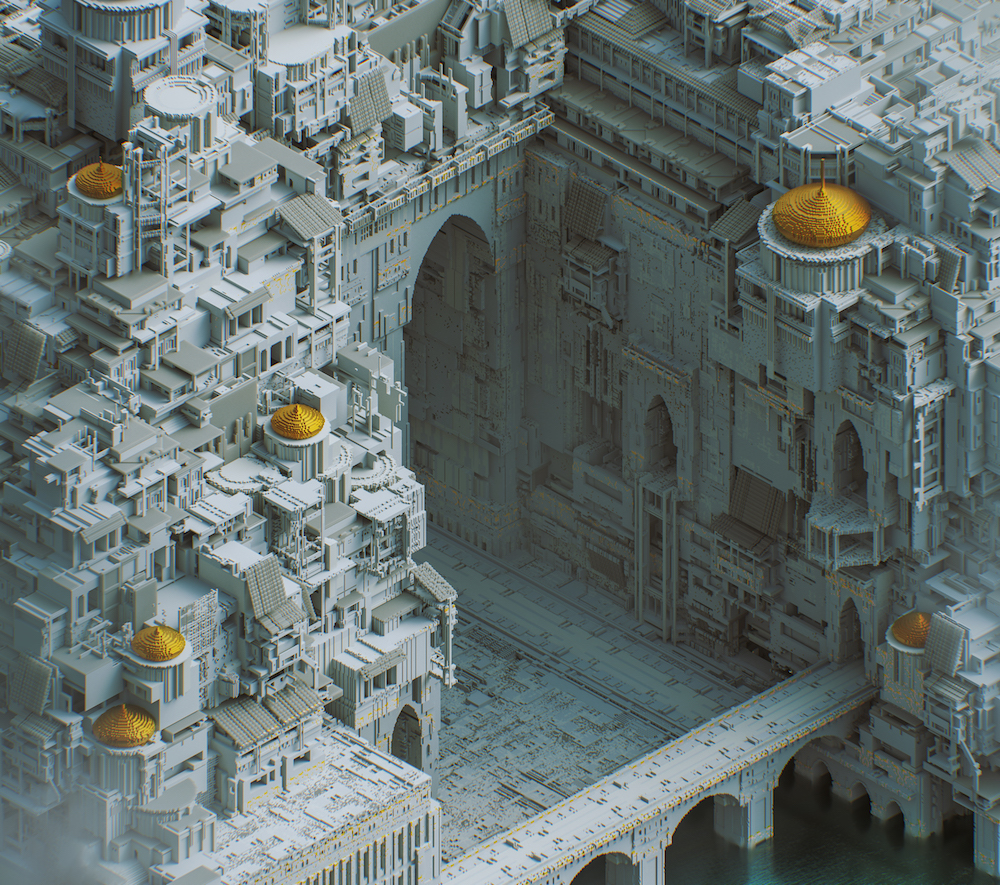 Mari.k, Emiris, 2021, Unique Non-Fungible Token, courtesy of SuperRare.
Mari.k, Emiris, 2021, Unique Non-Fungible Token, courtesy of SuperRare.
WW: What then do you make of the traditional art world and nondigital native artists entering this space?
AR: I think to be a crypto artist, you need to be fully invested into the space, the community, and the movement. When traditional artists enter the space out of curiosity, generating some extra revenue, or expanding their multimedia practices, to me they are not crypto artists. Most of them wouldn’t want to be labeled as that either. It’s like when Abstract Expressionists decide to paint some Pop art for fun.
But it’s totally everyone’s freedom to make whatever art they want to do. In fact, we are currently organizing an exhibition to highlight artists who work both in the digital and the physical world.
WW: You’ve created exhibitions of digital art, like the recent “Invisible Cities.” What is your approach to storytelling around digital art?
AR: I always want to create some new narratives that are special to digital art. Last year I did a Gen Z art exhibition. As you can imagine, they are totally digital native and it was interesting to learn their perspectives as crypto artists. I also did one on motion designers. Again, a topic you won’t see in the fine art world. But motion designers are such a huge part of the crypto art community. I learned so much from those artists and saw how much impact crypto art made on their practices and careers. Another more “conventional” one I did was generative and AI art in crypto art. Generative and AI art is very much in the context of art history, but crypto art helps this genre immensely as the artworks are inherently digital.
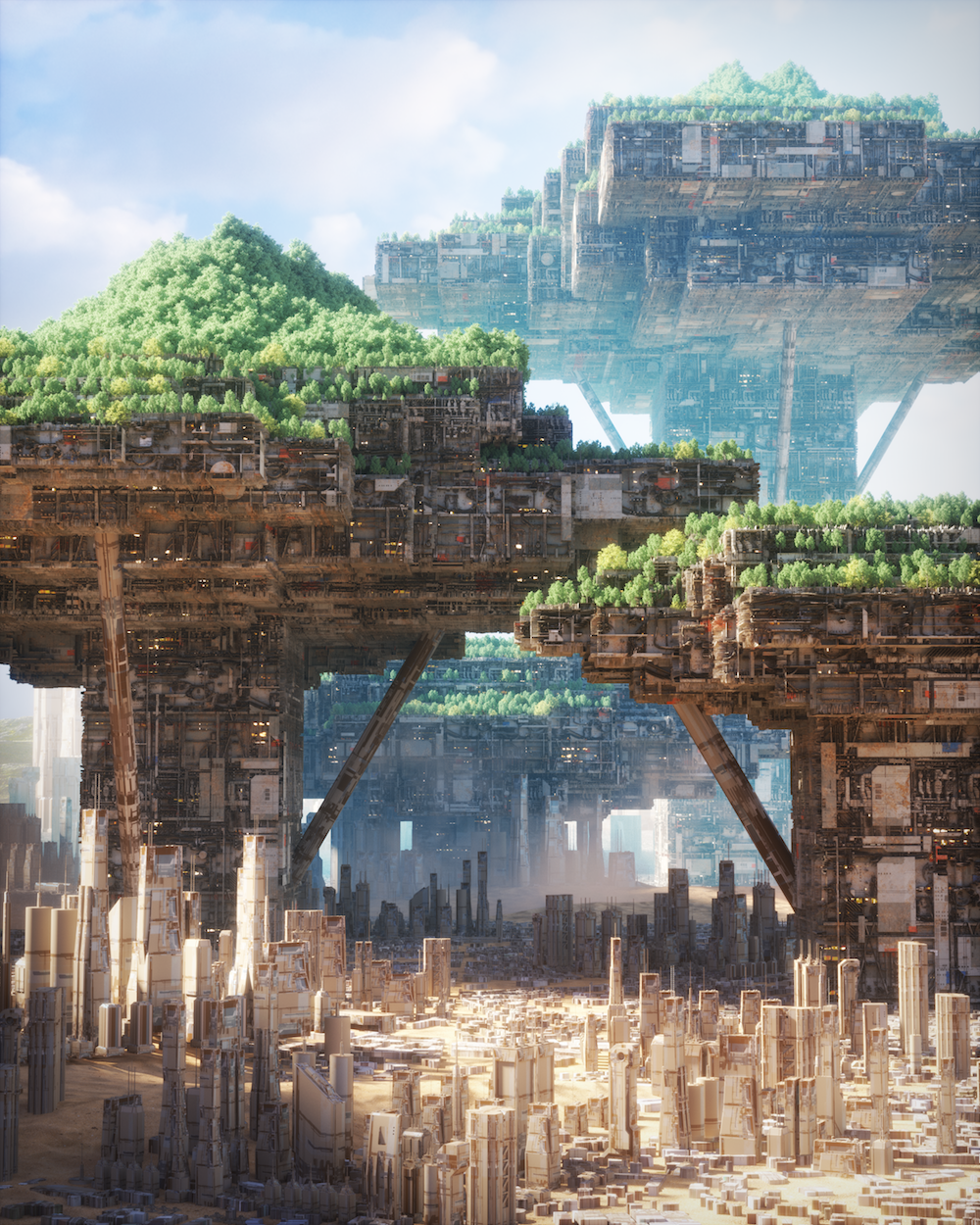 Annibale Siconolfi, The Old District, 2021, Unique Non-Fungible Token, courtesy of SuperRare.
Annibale Siconolfi, The Old District, 2021, Unique Non-Fungible Token, courtesy of SuperRare.






